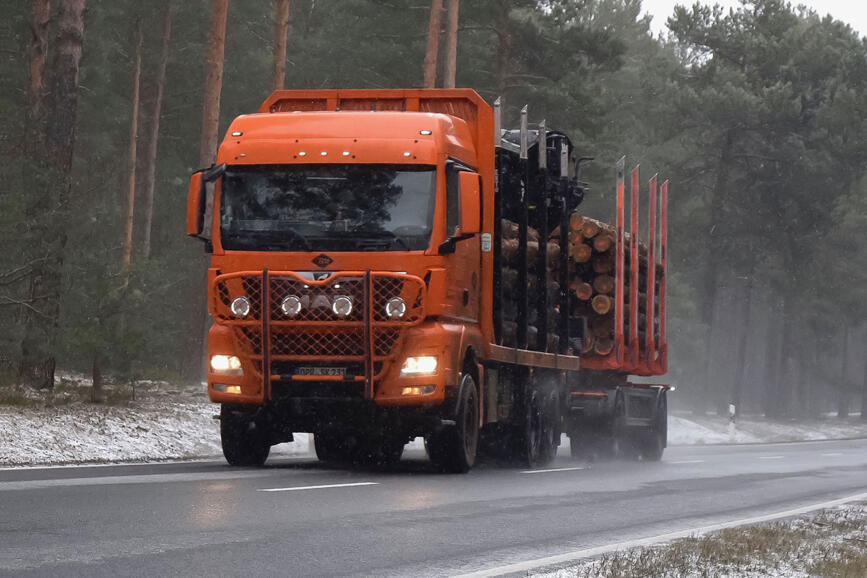Submarine on the road
A heavy transport of superlatives
30 axles, 240 wheels, a total weight of almost 500 tons, a train length of almost 100 meters with up to four tractor units and a total towing capacity of a good 2500 hp - these are record-breaking, or at least impressive, key data for a heavy submarine transport that spent more than a year travelling across Germany and most recently several weeks through the Heilbronn region. Andreas Fehsenmeier and his son Linus followed the reloading of the submarine from the Neckar to the road in Haßmersheim and the onward transportation from there. They report on the event for us.
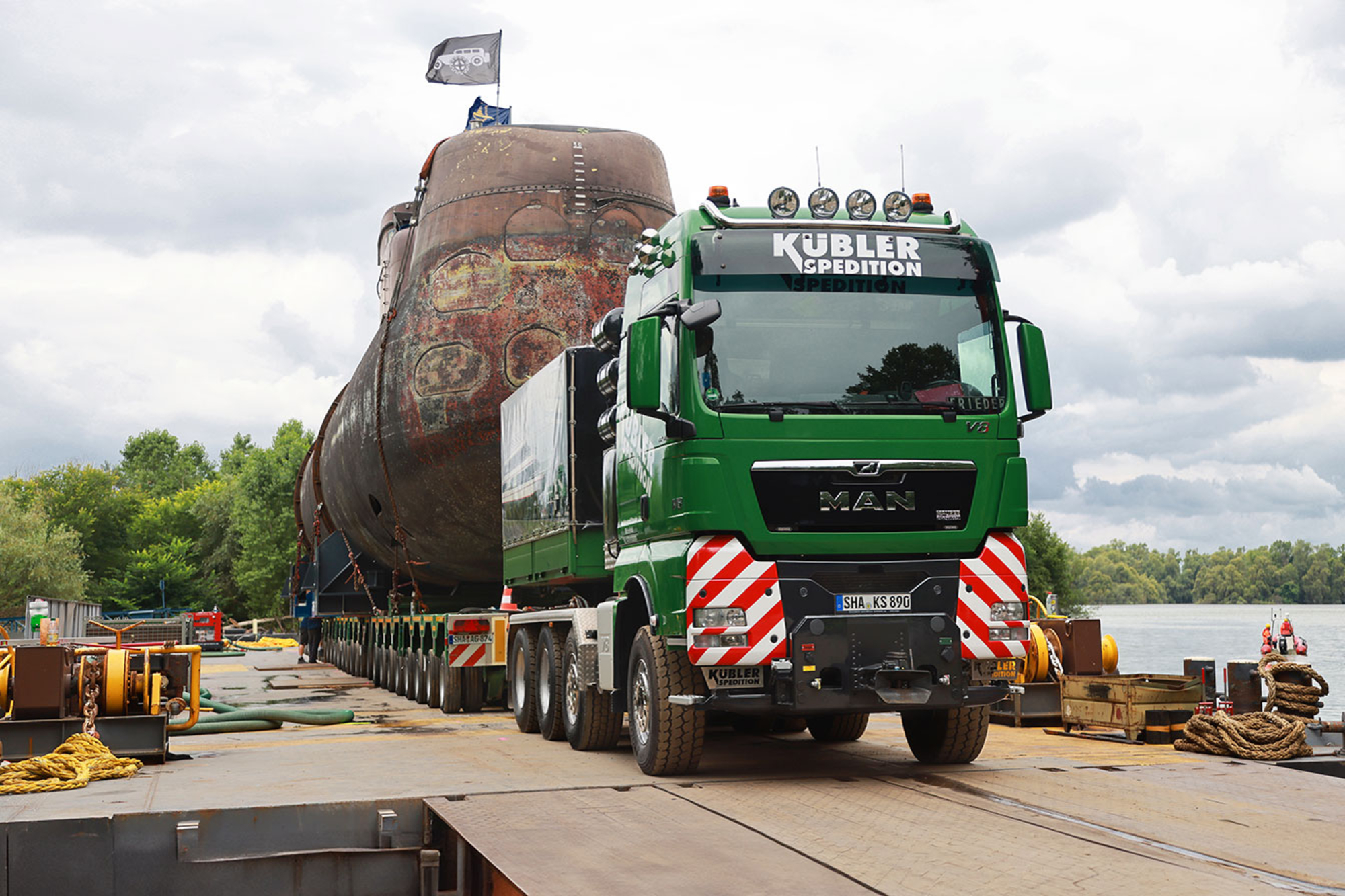
The U17 submarine, which is almost 50 meters long, 4.6 meters wide and up to nine meters high depending on the loading position, set off on its journey. The reason for this unusual transportation was the transfer of the submarine to the Sinsheim Technology Museum after its decommissioning. Together with its branch in Speyer, the museum is not only known for its extensive collection of vintage cars and technology, but also for unusual large exhibits such as aircraft (Concorde, Tupolev Tu-144, Boing 747), space shuttles (Buran and replica of the ISS module SWESDA) and steam locomotives as well as the U-9 submarine.
A submarine transport over such a long distance is an extraordinary undertaking and seems to have only one historical model: A Google search finds a comparable transport that took place during the Second World War. At that time, it involved the transfer of the so-called U-Flotilla from the North Sea to the Black Sea port of Constanta in Romania, with astonishing parallels. Here is the link to the entry in Wikipedia.
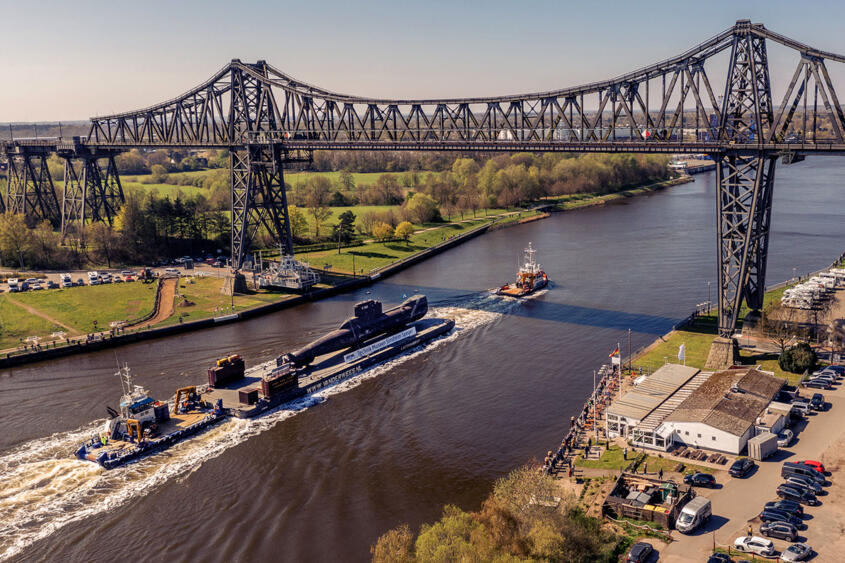
On March 29, 2023, the transport of the U17 started in Kiel's naval port. On a large ocean-going pontoon, it traveled in a pushed convoy through the Kiel Canal and along the coast to Rotterdam and then up the Rhine to Speyer. There, the submarine was prepared on land for several months for onward transportation (removal of the batteries and submersible weights, installation of a special rotating device for driving under bridges and obstacles) and then transferred back across the Neckar to Hassmersheim near Heilbronn in a pushed convoy. Until the last century, Hassmersheim was the largest inland shipping village in southern Germany. It was the only place where the landing and reloading onto a large Scheuerle InterCombi platform trailer could take place, as the village has a large former ferry station, which made the spectacular maneuver possible. From there, the journey took detours through the region, as many obstacles such as bridges, highways and narrow roads had to be avoided in order to reach the destination, the Sinsheim Technology Museum. The submarine finally arrived there on July 28, 2024.
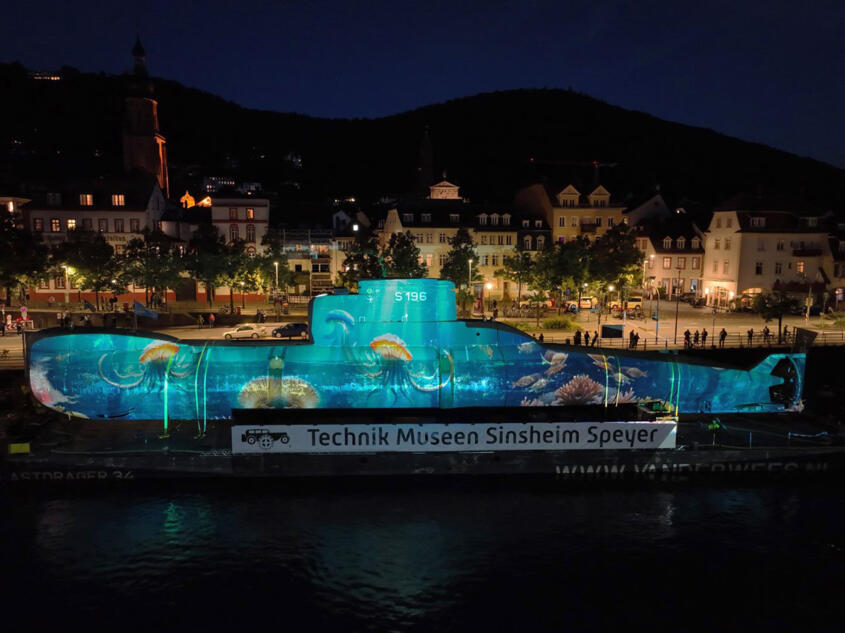
The four-week regional transport from Speyer to Sinsheim was like a huge public festival. Every section of the route was lined with hundreds, even thousands of spectators. Almost every town through which the convoy passed had organized an accompanying street festival, in some cases lasting several days, with music, entertainment, food and drink stands. The enthusiasm and creativity seemed to know no bounds when, for example, the submarine became part of a spectacular light projection show in Heidelberg or when accompanying songs such as “Yellow Submarine” by the Beatles, “Fat bottomed girls” by Queen and, of course, the legendary soundtrack by Klaus Doldinger to the film “The Boat” were played in almost every town or even specially composed songs fueled the atmosphere and special submarine cocktails, burgers or sausages were sold.
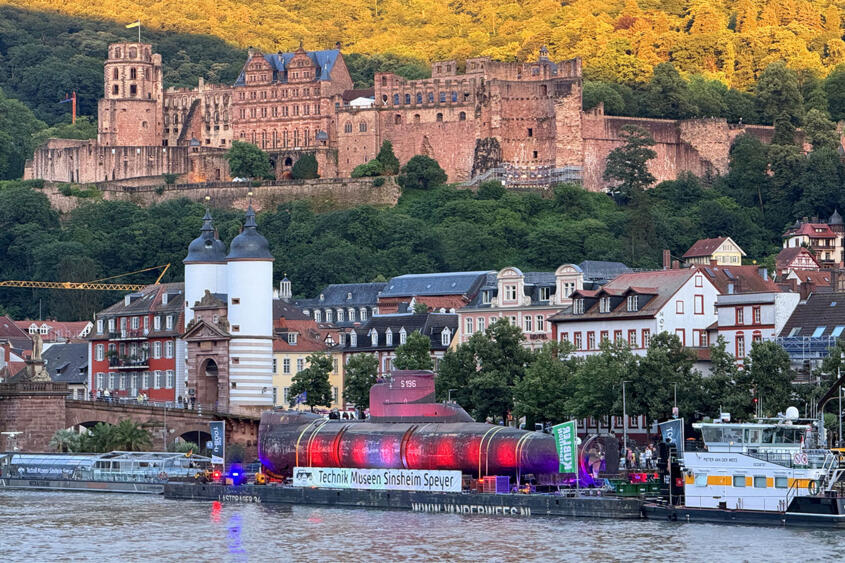
The landing and unloading of the giant submarine then took place on the weekend of July 13 and 14, after it had already been given a fitting welcome on the Tuesday before as part of a launch party in Hassmersheim with several gun salutes.
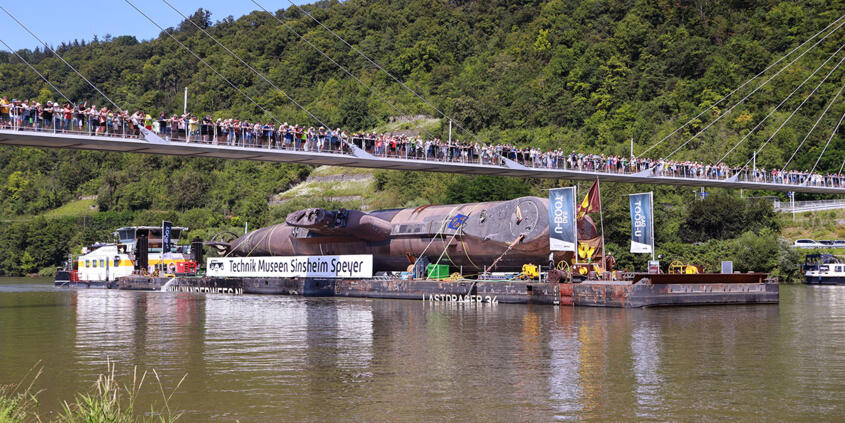
As the pontoon with the submarine had to be turned across the banks of the Neckar for the landing, the roll-off could only begin on Saturday in the early hours of the morning at 04:00, as the waterway had to be completely closed to shipping traffic during the entire landing. This posed two challenges: The pontoon had to be positioned at right angles to the current in the flowing Neckar and had to remain absolutely horizontal during the entire roll-off.
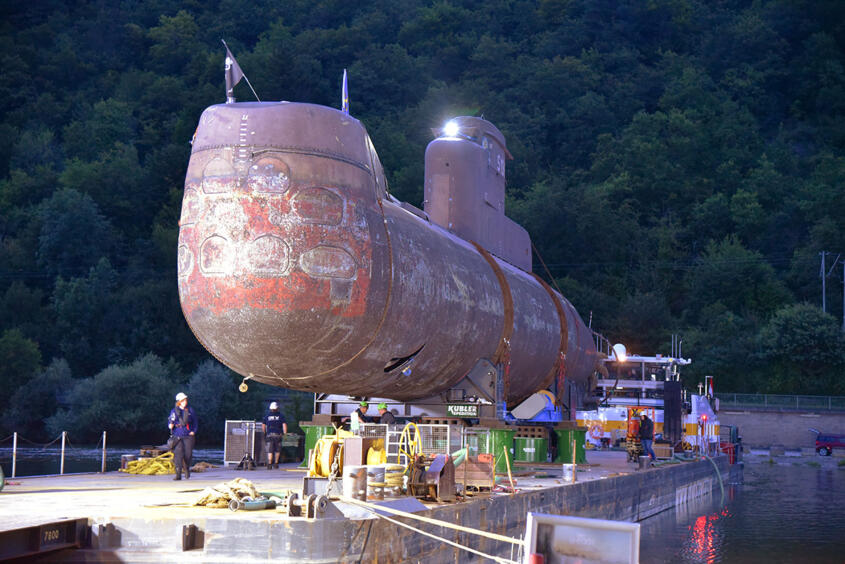
This task was mastered by constantly ballasting the pontoon while simultaneously leveling the low-loader underneath. This procedure was necessary because the submarine was too heavy for a truck-mounted crane, so the only way to handle it was to jack it up and drive the platform trailer underneath the submarine. No wonder that the entire process took several hours and only ended in the morning at around 8.30 a.m. when the entire heavy transport was set up in the middle of the narrow village street and the only thoroughfare. Now everyone could marvel at the huge submarine at close range and even touch it.
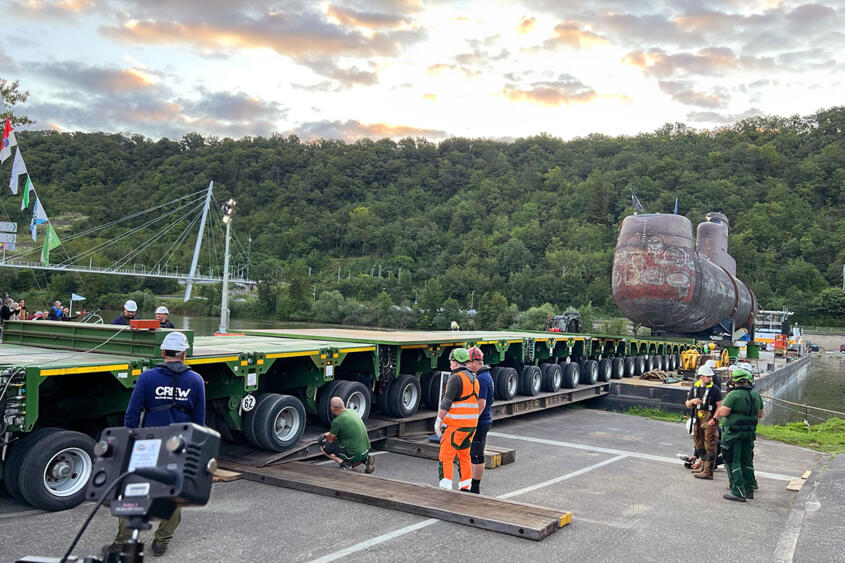
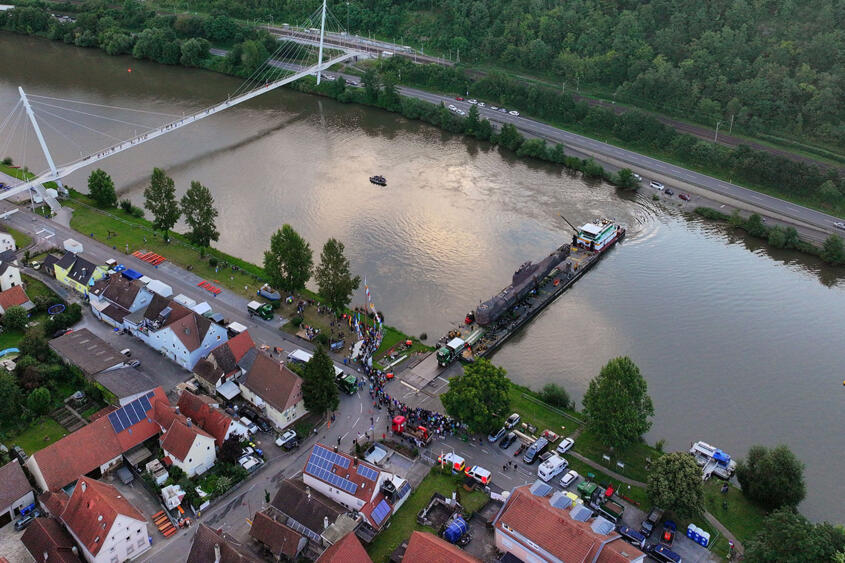
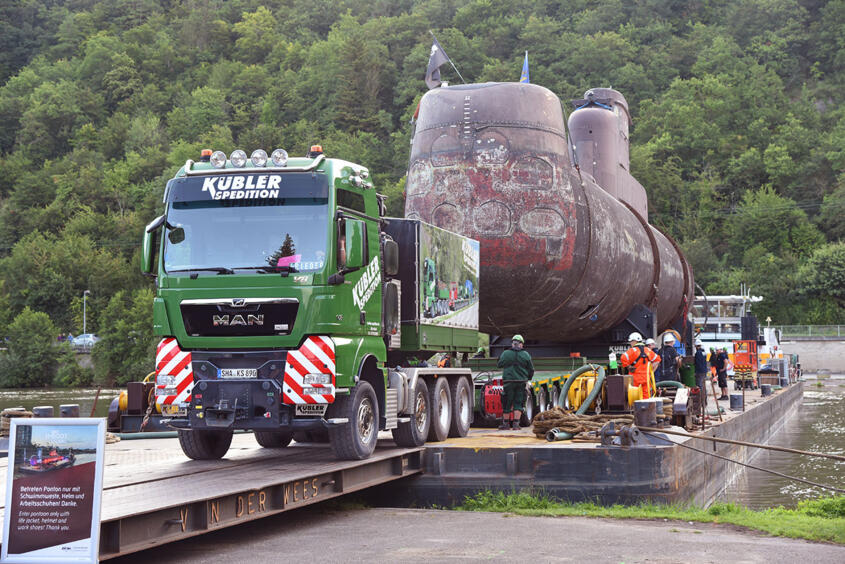
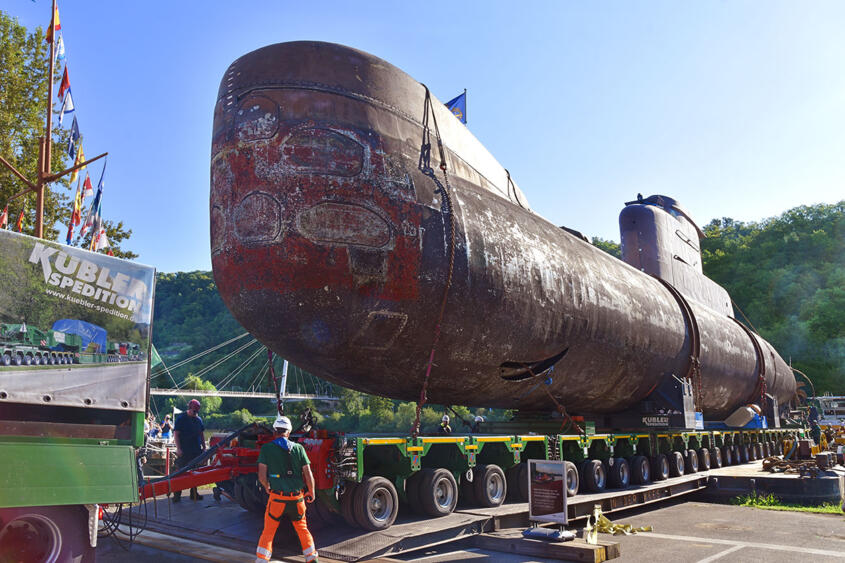
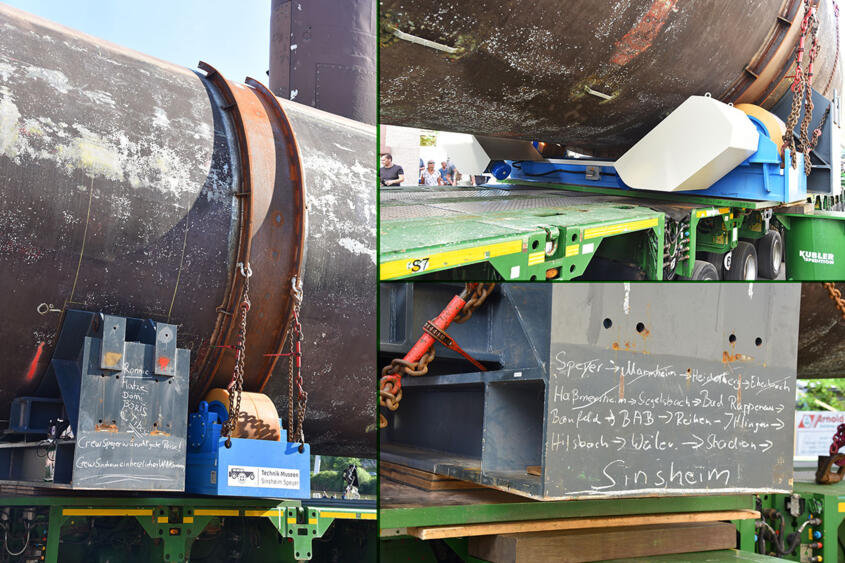
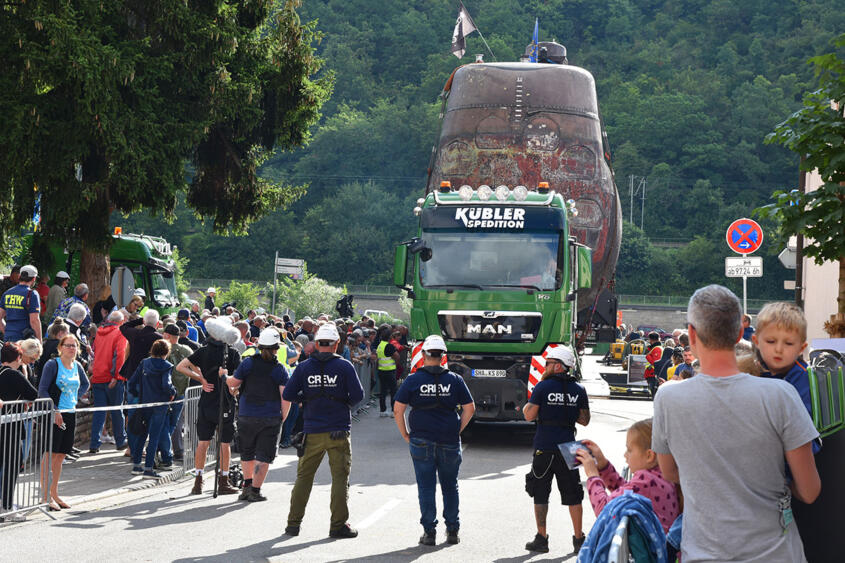
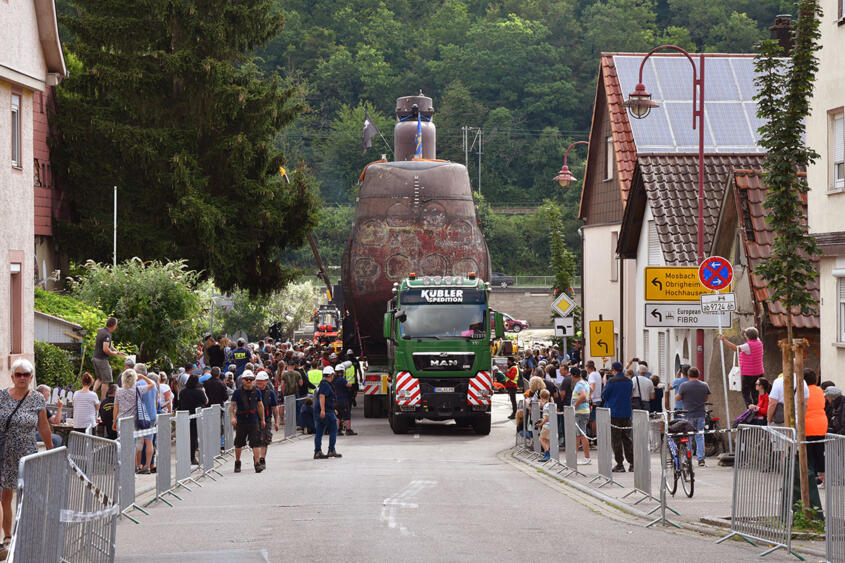
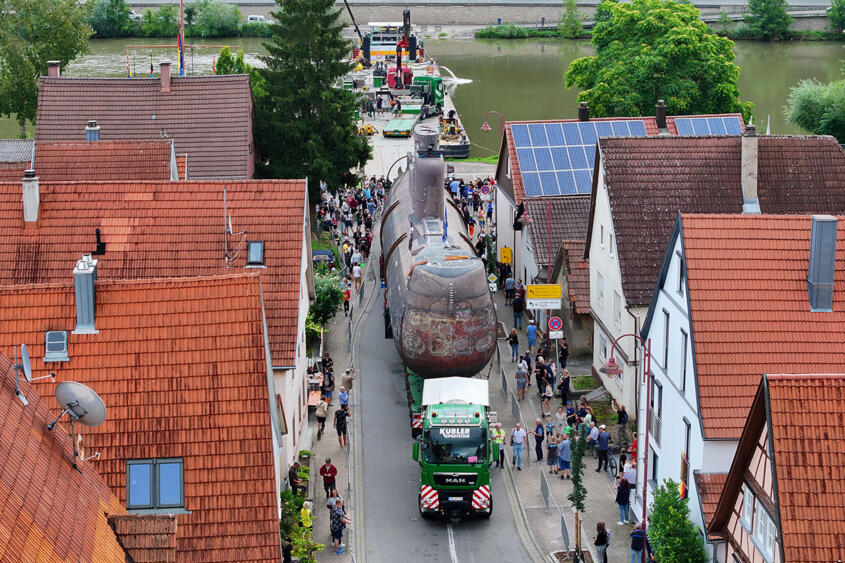
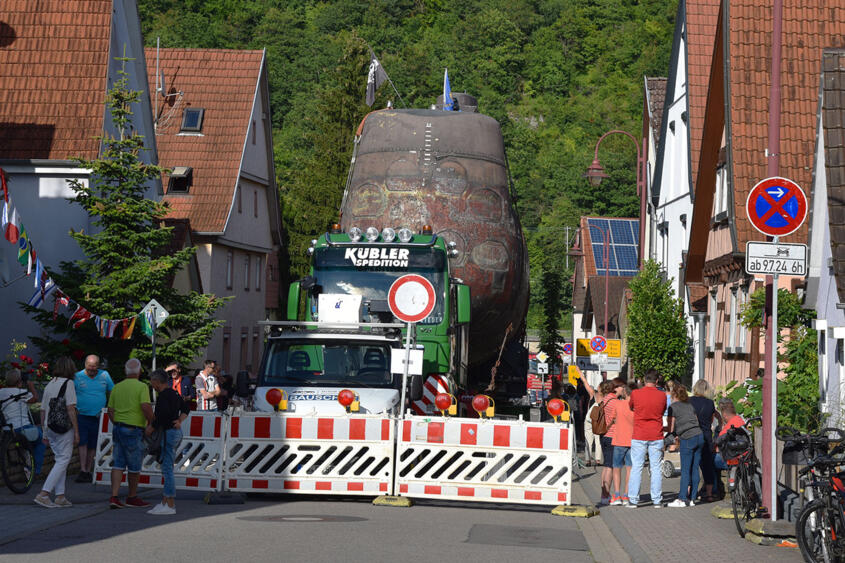
After the strenuous loading job, the crew from the Sinsheim Technology Museum and the Kübler shipping company took a well-earned break until Sunday morning, when the highlight of the submarine festival week was announced for the people of Hassmersheim. In the Neckar foreland and in the alleyways around the parked submarine, a variety of mobile catering outlets were set up, bands played and people partied around the submarine until late into the night in the best weather.
On Sunday morning, the tour continued punctually at 10.00 am in glorious weather. Almost the whole of Hassmersheim and hundreds of visitors from outside lined the streets as the almost 100-meter-long lindworm set off again and made its way through the town at walking pace, secured by “living barrier beacons”.
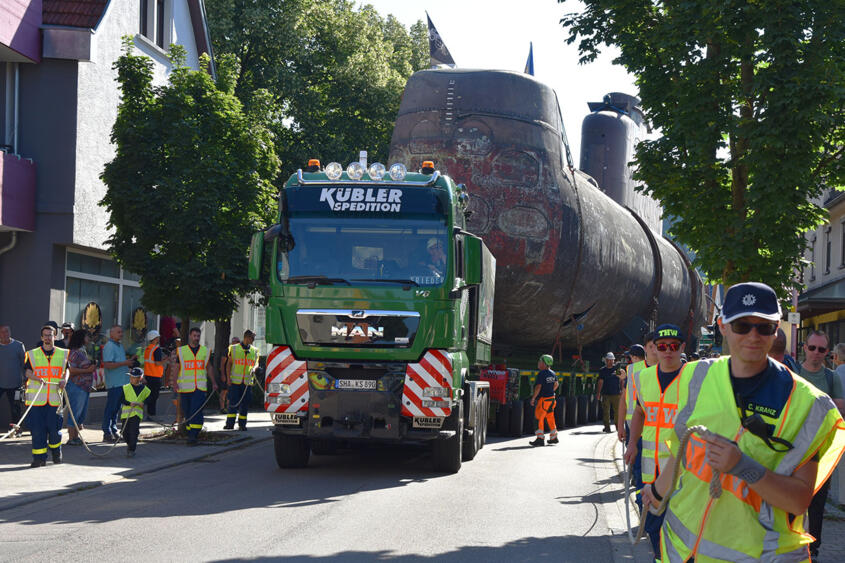
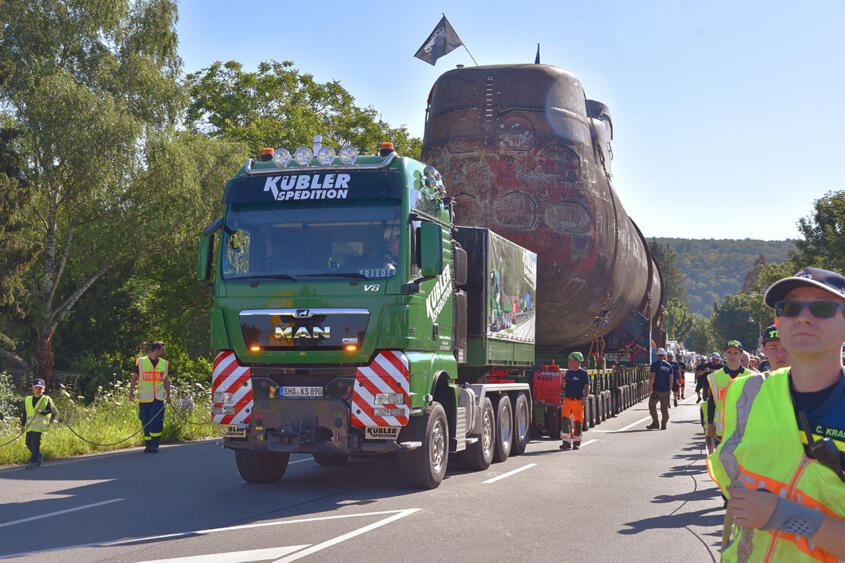
The first major hurdle had to be overcome right at the end of the village, a newly built traffic circle with a hill in the middle. Ultimately, however, this was not a problem, as the submarine first left the traffic circle via the next exit with plenty of steel plates laid to widen and stabilize the road and then reversed back into the traffic circle after the tractor units had been retracted. After a further 90-degree turn to the right, the heavy load finally left the obstacle behind. It was an impressive spectacle to see the dynamics and precision with which the steel plates were assembled and disassembled before each turn, the tractor units were uncoupled and coupled and changed positions synchronously, almost like a ballet. And all this in the midst of crowds of spectators, who often stood very close to the action despite the barriers.
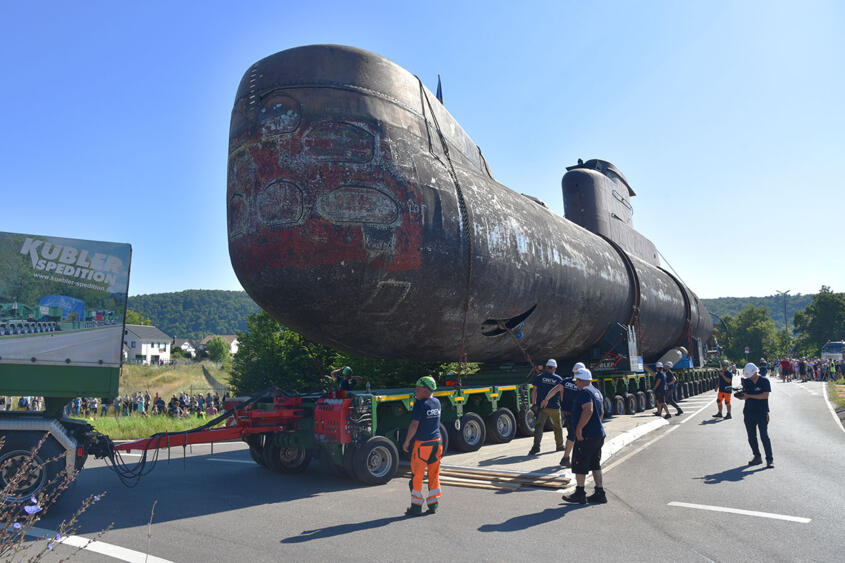
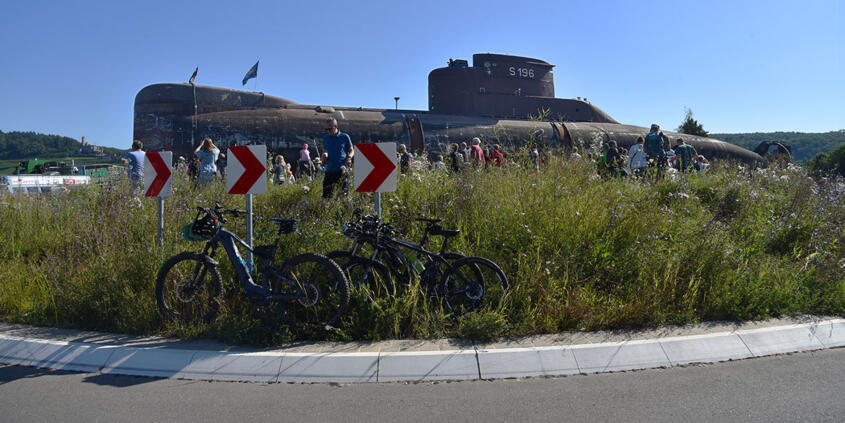
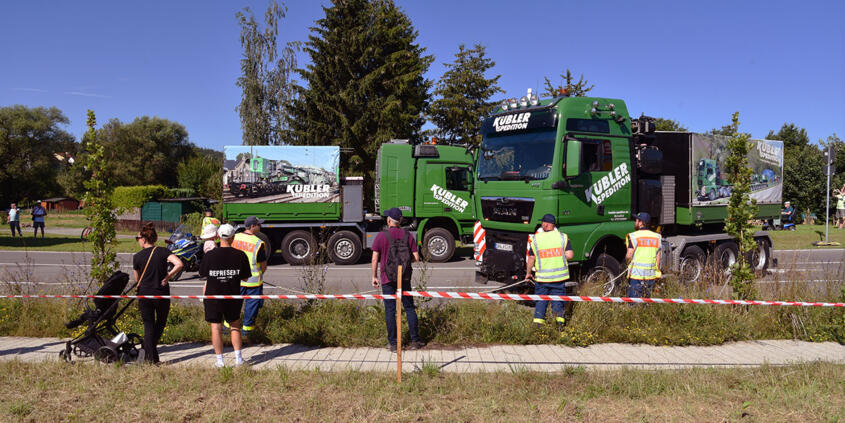
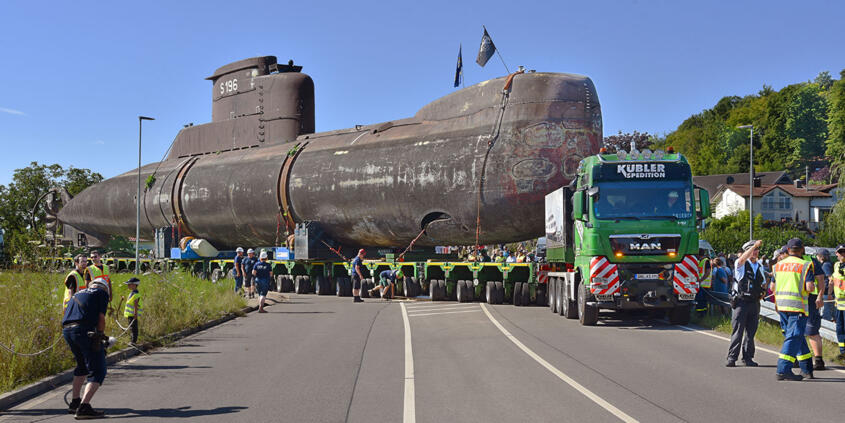
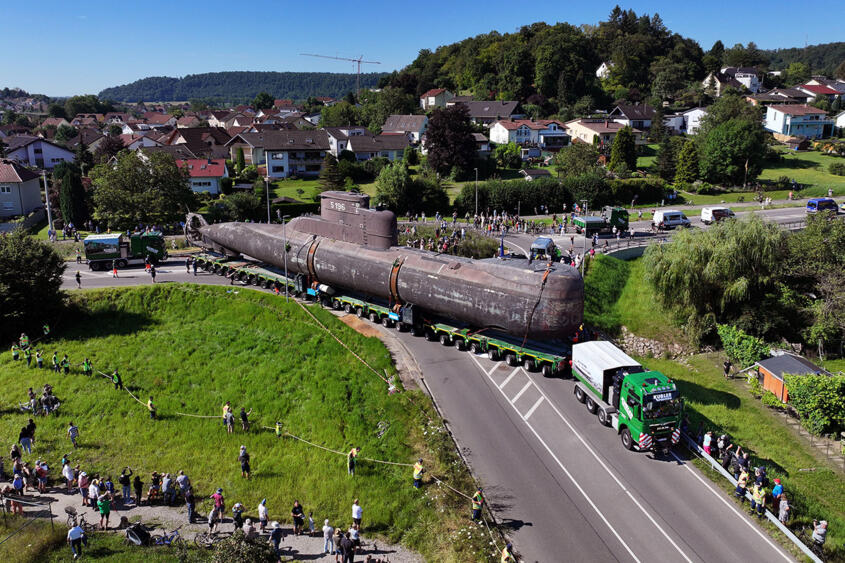
Then the way was clear towards Neckarmühlbach, the next town on the Neckar. From there, the transport then swung inland, steeply up the Five-mill-valley into the Kraichgau region, at least in the approximate direction of the Sinsheim Technology Museum, where the submarine would not arrive until a good two weeks later due to the many detours required. However, another day was to pass before the aforementioned route, with a gradient of more than 17 percent in places, could be tackled, as it first had to pass under the cement conveyor belt near Neckarmühlbach, where the ship loading station of a cement works is located. To do this, the submarine had to be turned on its side by 70 degrees using the special turning device (see detailed photos above). For this reason, a break was taken on Sunday near the conveyor belt until the next morning.
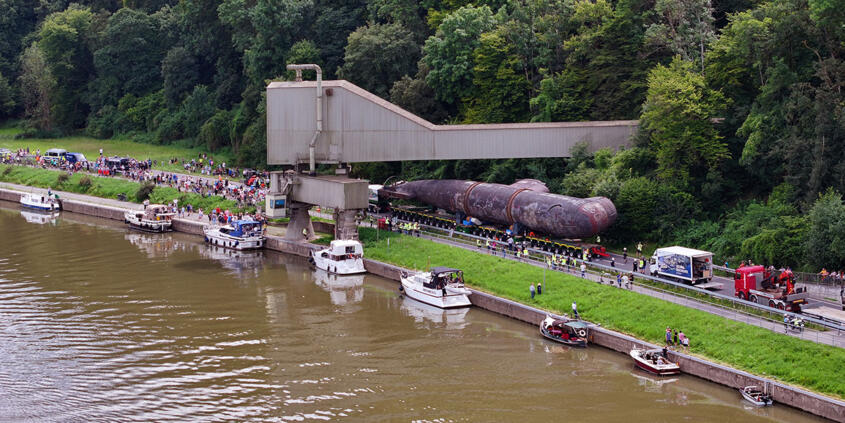
For Andreas and Linus Fehsenmeier, accompanying the submarine transport was now over, as the weekend was drawing to a close and school and work naturally took priority. If you would like to follow the progress of the journey, you can do so on the Sinsheim Technology Museum's U17 website, which was set up especially for the occasion and is very informative.
There are also a number of interesting videos on YouTube documenting the transport, just enter the keyword “U17 Transport”.
